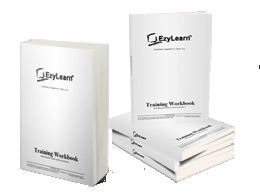Email Marketing with Your Customers and Leads
 A database is a collection of information in a structured format. Almost every business has a database however, many business people don’t realise where their databases are located.
A database is a collection of information in a structured format. Almost every business has a database however, many business people don’t realise where their databases are located.
IF YOU OPERATE your accounts using MYOB, Xero or QuickBooks you will have a database of customers, prospects (if you use the Quoting feature), products you sell and, of course, financial transactions.
Even if you do your accounting using a spreadsheet program like Microsoft Excel, you have the structure to keep all kinds of databases. We have an Excel short training course that goes through just the database features and functions of that program.
MailChimp is the leading Email Marketing Software
MailChimp has been the market leader since email marketing started and now it is owned by one of the larges software companies in the world – Intuit. The three fundamental aspects of an email marketing database include:
- Lead Capture
- Audience
- Content
- Campaigns
- Reports
The above elements in MailChimp are similar to other email marketing program you can use including:
- Aweber,
- GetResponse,
- Constant Contact,
- MailerLite, &
- Campaign Monitor
MailChimp is a good choice because it is free when you start out from scratch, and the software integrates with many other online applications, including Xero.
Capturing Leads and Subscribers

What was previously a simple lead capture form has turned into dozens of different options. Now someone can enter your audience by visiting a landing page, requesting information, buying a product or sending you a message. Lead capture and managing your Audience now has many different aspects to manage.
Your Audience

The key elements of your audience database include your clients’ first name and email addresses. Once you have collected these in a structured format like Excel, you can very easily import that information and start crafting a campaign.
You can also use online integrations to sync your contact details from Xero, Salesforce or hundreds of other online software sources.
Audiences these days are no longer just related to email addresses and MailChimp enables you to market and retarget your marketing to prospects and customers in lots of different ways.
Email Marketing Campaigns and CTA’s

An email marketing campaign will include settings like:
- Audience (because you can have more than one email marketing list
- Subject
- Message contents
- Call-to-action (CTA).
The CTA is pivotal to your email marketing campaign. If you’re just sending an email to provide people with information for the sake of it, without giving them a reason to take action, you could be throwing away your time and money. People are busy and bombarded with messages, make yours’ count.
The other purpose/s of a single CTA or more is to obtain more website traffic, more conversions and, ultimately, to see that you earn more money from your existing customers.
Reporting

Your email marketing software is not just a piece of interesting software that captures the details of your customer but a tool to help increase website visitors, increase engagement with your business and ultimately result in more income and profit.
After you send your email marketing campaign you can directly measure its success using these metrics:
- Open rate: how many subscribers actually open the email message
- Click rate: how many subscribers click on a link in your message
- Engagement: how many people share or reply to your message







